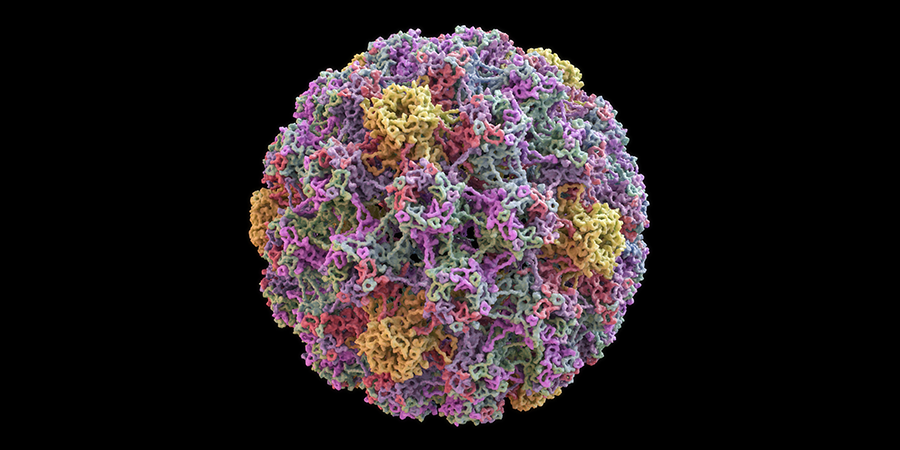OICR-supported research could open new avenues to treat cancers of the cervix, head and neck.
The human papillomavirus (HPV) is the driving force behind most cancers of the cervix, head and neck thanks to its unique ability to hijack the human chromosome.
OICR-supported research has uncovered new details about how that hijacking happens and could provide a roadmap for how to stop it.
“HPV has the incredible ability to integrate itself into a human’s chromosomes,” says Dr. Michael Hoffman, a Senior Scientist at Princess Margaret Cancer Centre who led the study with colleagues Dr. Mathieu Lupien (an OICR Investigator) and Dr. Scott Bratman. “Our study focuses on how that integration, and where it takes place, can contribute to cancer.”
The study, published in Genome Biology, describes how HPV DNA inserts itself into its host’s genome and ‘rewires’ the activity of nearby genes.
“When the rewired genes normally play a role in stopping abnormal growth, this can result in cancer,” Hoffman says.
The virus works on human cells by ‘loosening’ chromatin, a ‘package’ of DNA which is normally tightly packed into a cell’s nucleus. This gives the virus access to a cell’s DNA and allows it to make changes to the proteins that regulate cell growth.
“We found that by hijacking the epigenetic machinery of the cell, HPV can induce everlasting changes in a chromosome that predispose to cancer,” says Dr. Mehran Karimzadeh, first author of the study, who performed the research while a PhD student at Princess Margaret Cancer Centre.
Hoffman says his group’s findings about HPV changing human DNA are unique from other studies into HPV and cancer, which have focused largely on the role of HPV’s own DNA. By describing this pathway through which HPV causes certain cancers, this new study could help discover new ways to treat those cancers.
“What we discovered in this study, when combined with DNA sequencing technology, could lead to better assessment of cancer prognosis and more informed treatment decisions,” Hoffman says.


